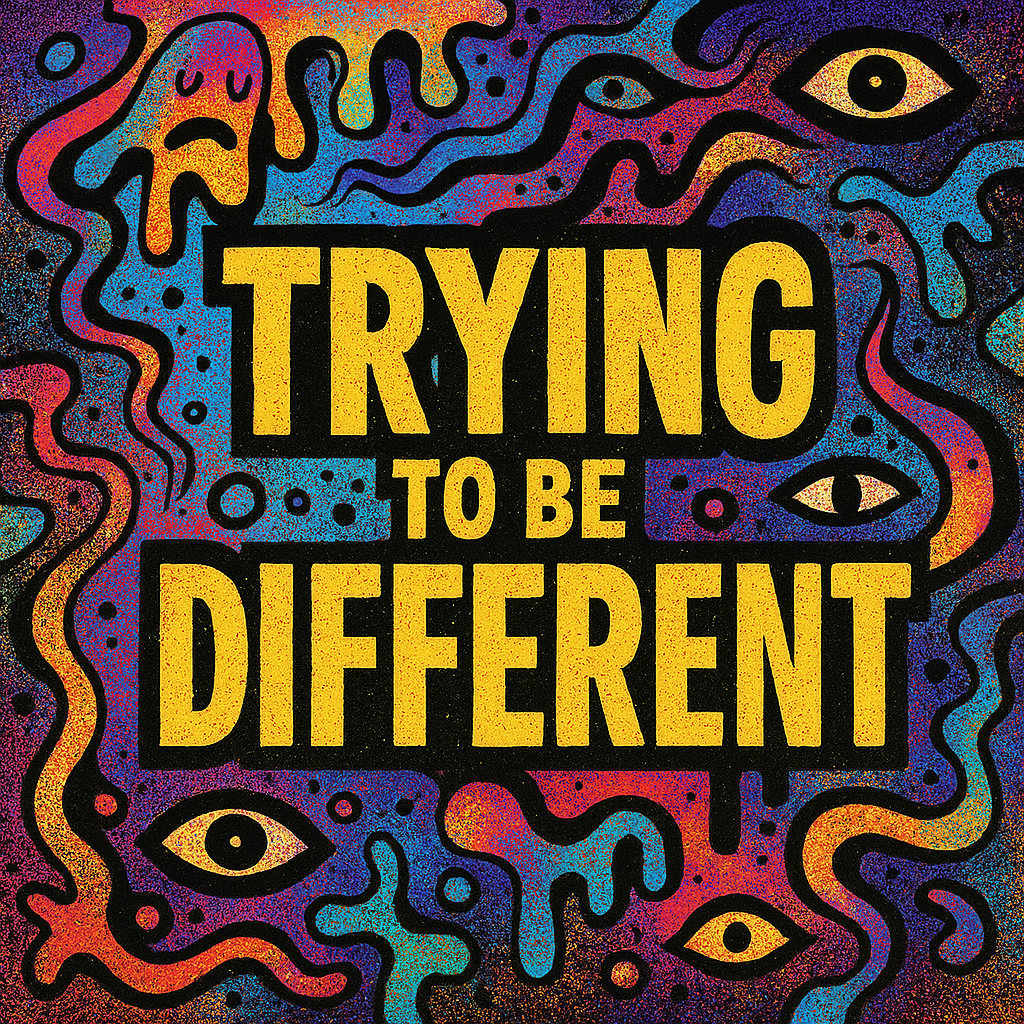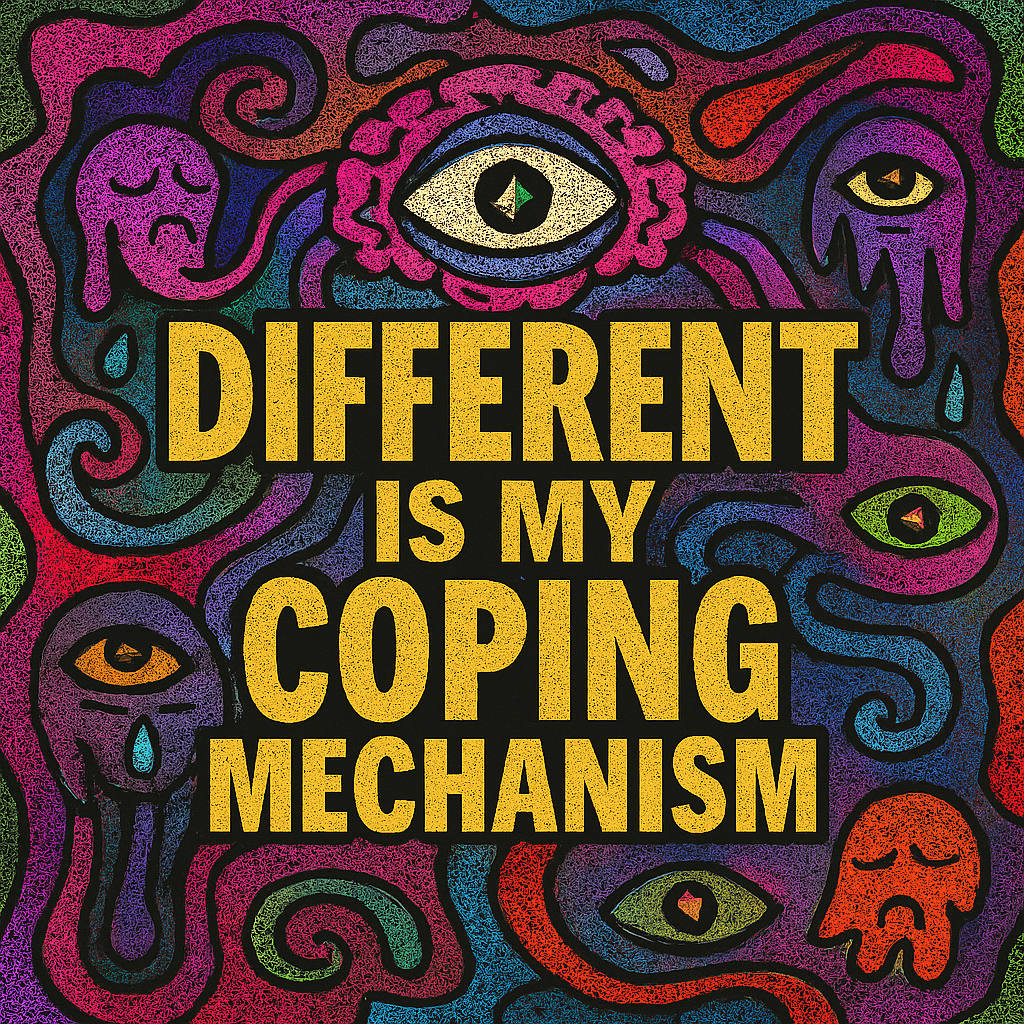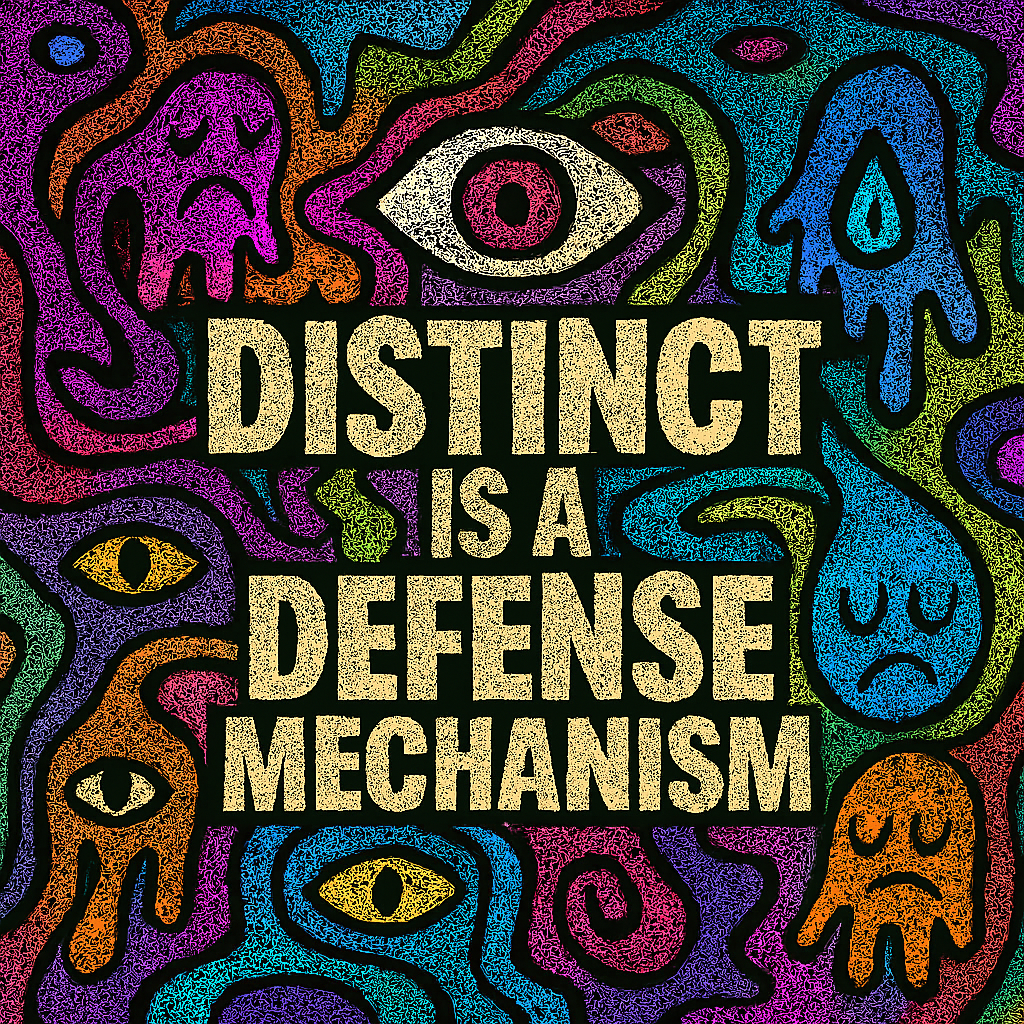
Rebellious You
Trying to Be Different – When Identity Is Performed but Not Felt
DIFFERENCE AS DESIRE
The identity performance desire to be different is a powerful psychological force. It is shaped by culture, identity, insecurity, and aspiration. People often perform uniqueness to gain attention, autonomy, or emotional distance. Internally, they may feel ordinary, conflicted, or invisible. The performance of difference is not always deception—it is often survival. It helps people navigate social hierarchies, avoid conformity, or reclaim agency. Trying to be different can be empowering or exhausting. It may reflect genuine identity or strategic adaptation.
The psychology of difference explores how people signal uniqueness even when they feel disconnected from it. This includes fashion, speech, posture, and belief systems. It also includes emotional distancing and symbolic rebellion. The tension between external difference and internal sameness creates emotional friction. This friction can lead to growth, confusion, or collapse. Understanding this dynamic helps decode identity performance. Because difference is not always felt—it is often constructed. And construction is not failure—it is strategy.
SYMBOLIC REBELLION – WHEN DIFFERENCE IS A SIGNAL
Symbolic rebellion involves visible cues that challenge norms. These cues include clothing, language, posture, and affiliation. Internally, the person may feel uncertain, anxious, or emotionally neutral. The rebellion is not always rooted in conviction—it may be exploratory or performative. Symbolic rebellion helps people differentiate themselves from authority or peers. It creates emotional distance and social contrast. This is common in adolescence, subcultures, and identity transitions. Observers may interpret it as defiance or authenticity. But it often reflects confusion or emotional experimentation. Symbolic rebellion is not always sustainable—it may fade or evolve. Recognizing it helps decode emotional development. Because rebellion is not always resistance—it is often rehearsal. And rehearsal builds identity.
Table – Symbolic Rebellion and Psychological Function
| External Signal | Internal State | Psychological Function |
|---|---|---|
| Unusual Clothing | “I want to stand out” | Identity signaling |
| Contrarian Speech | “I need space from norms” | Emotional distancing |
| Nonconformist Posture | “I’m not like them” | Boundary creation |
| Subcultural Affiliation | “I’m searching for belonging” | Group differentiation |
| Rejection of Tradition | “I’m testing limits” | Autonomy rehearsal |
IDENTITY FATIGUE – WHEN DIFFERENCE IS EXHAUSTING
Performing difference requires energy. It involves constant monitoring, adjustment, and emotional labor. Internally, the person may feel tired, fragmented, or emotionally depleted. Identity fatigue occurs when the performance of uniqueness outweighs its emotional reward. This is common in high-visibility roles, creative industries, and marginalized identities. The person may feel pressure to innovate, provoke, or remain unpredictable. Observers may admire the uniqueness but miss the exhaustion. Identity fatigue can lead to burnout, withdrawal, or identity collapse. It is not a failure—it is a signal. The body and mind need rest, integration, and emotional safety. Recognizing identity fatigue helps prevent misjudgment. Because difference is not always energizing—it can be draining. And fatigue is not weakness—it is feedback.
Table – Identity Fatigue and Psychological Function
| External Signal | Internal State | Psychological Function |
|---|---|---|
| Constant Reinvention | “I’m running out of ideas” | Emotional depletion |
| Forced Originality | “I feel trapped by my image” | Identity strain |
| Avoidance of Norms | “I’m tired of performing” | Boundary fatigue |
| Emotional Withdrawal | “I need to disappear” | Recovery impulse |
| Inconsistent Signals | “I’m losing clarity” | Identity fragmentation |
DIFFERENCE AS ESCAPE – WHEN UNIQUENESS IS A REFUGE
Trying to be different can be a form of escape. It helps people avoid emotional pain, social rejection, or internal conflict. Internally, the person may feel grief, fear, or shame. The performance of uniqueness becomes a distraction or shield. This is common in trauma survivors, displaced individuals, and emotionally overwhelmed personalities. The escape is not always conscious—it may be reflexive. Observers may interpret it as creativity or rebellion. But it often reflects emotional avoidance. Difference becomes a refuge from vulnerability. Recognizing this helps decode emotional strategy. Because escape is not always flight—it is adaptation. And adaptation deserves compassion.
Table – Difference as Escape and Psychological Function
| External Signal | Internal State | Psychological Function |
|---|---|---|
| Dramatic Style Shift | “I need to feel new” | Emotional reset |
| Sudden Belief Change | “I’m distancing from pain” | Identity escape |
| Relocation or Isolation | “I need space to breathe” | Avoidance |
| Rejection of Past Self | “I can’t face that version” | Emotional shielding |
| Overcompensation | “I’m hiding something” | Distraction |
DIFFERENCE AS BELONGING – WHEN UNIQUENESS BUILDS COMMUNITY
Trying to be different can help people find their tribe. It signals values, aesthetics, and emotional resonance. Internally, the person may feel hopeful, curious, or emotionally open. The performance of difference becomes a bridge to others. This is common in subcultures, activist circles, and creative communities. The uniqueness is not just personal—it is relational. Observers within the group interpret it as authenticity. Observers outside may see it as rebellion. Difference becomes a shared language. It builds emotional safety and symbolic clarity. Recognizing this helps decode group identity. Because difference is not always isolation—it is often connection. And connection is built through contrast.
Table – Difference as Belonging and Psychological Function
| External Signal | Internal State | Psychological Function |
|---|---|---|
| Shared Aesthetic | “I feel seen here” | Group bonding |
| Common Language | “We speak the same truth” | Emotional resonance |
| Ritualized Behavior | “This feels sacred” | Identity anchoring |
| Mutual Rebellion | “We resist together” | Solidarity |
| Symbolic Markers | “I’m part of this” | Belonging |
EMOTIONAL CONTRADICTION – WHEN DIFFERENCE IS FELT AND DENIED
Emotional contradiction occurs when people feel different but deny it outwardly. Internally, they may experience grief, rage, or alienation. Externally, they perform normalcy, politeness, or agreement. This contradiction creates emotional tension and identity confusion. It is common in marginalized groups, high-pressure environments, and transitional identities. The person may fear rejection, exposure, or instability. Emotional contradiction is not hypocrisy—it is survival. It helps people navigate unsafe or uncertain spaces.
Observers may misread the person as dishonest or passive. But the contradiction often reflects emotional complexity. The person may be processing multiple truths at once. Recognizing this helps decode emotional nuance. Because contradiction is not failure—it is adaptation. And adaptation is layered. The face may say yes while the body says no. And both deserve to be heard.
Table – Emotional Contradiction and Psychological Function
| External Signal | Internal State | Psychological Function |
|---|---|---|
| Polite Agreement | “I feel alienated” | Social safety |
| Smiling in Discomfort | “I’m hiding pain” | Emotional shielding |
| Nodding in Conflict | “I’m afraid to speak” | Avoidance |
| Neutral Tone | “I’m overwhelmed” | Containment |
| Stillness in Emotion | “I’m processing too much” | Regulation |
SOCIAL MIMICRY – WHEN DIFFERENCE IS Borrowed
Social mimicry involves adopting the behaviors, styles, or beliefs of others to appear different. Internally, the person may feel insecure, disconnected, or emotionally blank. Mimicry helps them perform uniqueness without anchoring it in personal truth. This is common in adolescence, identity formation, and social media culture. The person may copy speech patterns, aesthetics, or ideologies. Observers may interpret it as creativity or rebellion. But it often reflects emotional displacement. Mimicry is not deception—it is rehearsal. It allows people to test identities before committing. Social mimicry can lead to growth or confusion. It is emotionally risky but developmentally normal. Recognizing mimicry helps decode identity exploration. Because borrowed difference is still part of becoming. And becoming is messy.
Table – Social Mimicry and Psychological Function
| External Signal | Internal State | Psychological Function |
|---|---|---|
| Adopted Aesthetic | “I want to feel unique” | Identity rehearsal |
| Imitated Speech | “I’m trying to belong” | Social bonding |
| Echoed Beliefs | “I’m unsure what I think” | Cognitive scaffolding |
| Mirrored Gestures | “I’m learning the script” | Emotional modeling |
| Sudden Style Shift | “I need to feel different” | Symbolic experimentation |
IDENTITY INFLATION – WHEN DIFFERENCE IS Exaggerated
Identity inflation involves amplifying uniqueness beyond its authentic scale. Internally, the person may feel ordinary, insecure, or emotionally flat. The exaggeration helps them feel significant or visible. This is common in influencer culture, performance art, and competitive environments. The person may use dramatic language, stylized behavior, or symbolic overreach. Observers may admire the boldness or question the sincerity. Identity inflation is not always manipulation—it can be desperation. It reflects a need to be seen, valued, or emotionally validated. The inflation may collapse under scrutiny or fatigue. Recognizing it helps decode emotional urgency. Because exaggeration is not always ego—it is often emptiness. And emptiness needs care.
Table – Identity Inflation and Psychological Function
| External Signal | Internal State | Psychological Function |
|---|---|---|
| Dramatic Self-Claims | “I need to feel important” | Visibility seeking |
| Stylized Behavior | “I’m afraid of being ignored” | Emotional amplification |
| Overuse of Labels | “I’m trying to define myself” | Identity scaffolding |
| Loud Rebellion | “I feel invisible” | Symbolic assertion |
| Constant Reinvention | “I’m chasing meaning” | Emotional compensation |

SYMBOLIC DETACHMENT – WHEN DIFFERENCE Is a Wall
Symbolic detachment involves using difference to create emotional distance. Internally, the person may feel overwhelmed, mistrustful, or emotionally raw. The performance of uniqueness becomes a barrier, not a bridge. This is common in trauma survivors, emotionally avoidant personalities, and high-control environments. The person may use sarcasm, abstraction, or aesthetic coldness. Observers may interpret it as sophistication or aloofness. But it often reflects emotional protection. Detachment is not indifference—it is shielding. The person may fear intimacy, exposure, or loss of control. Recognizing symbolic detachment helps decode emotional boundaries. Because difference is not always connection—it can be armor. And armor is earned.
Table – Symbolic Detachment and Psychological Function
| External Signal | Internal State | Psychological Function |
|---|---|---|
| Abstract Language | “I don’t want to be known” | Emotional distancing |
| Cold Aesthetic | “I’m protecting myself” | Symbolic shielding |
| Sarcastic Tone | “I’m afraid to be sincere” | Vulnerability avoidance |
| Intellectualization | “I’m hiding emotion” | Containment |
| Minimalist Identity | “I need control” | Boundary reinforcement |
AUTHENTICITY TENSION – WHEN DIFFERENCE Feels False
Authenticity tension occurs when people perform uniqueness that does not feel true. Internally, they may feel guilt, confusion, or emotional dissonance. The performance may be strategic, aspirational, or socially required. This tension creates psychological discomfort and identity instability. It is common in branding, activism, and transitional phases. The person may feel trapped by their own image. Observers may praise the performance while missing the conflict. Authenticity tension is not failure—it is feedback. It shows that the identity needs recalibration. Recognizing this helps decode emotional honesty. Because truth is not always visible. And visibility is not always truth.
Table – Authenticity Tension and Psychological Function
| External Signal | Internal State | Psychological Function |
|---|---|---|
| Forced Uniqueness | “This doesn’t feel like me” | Emotional dissonance |
| Strategic Identity | “I’m trying to survive” | Social adaptation |
| Inconsistent Messaging | “I’m losing clarity” | Identity drift |
| Emotional Flatness | “I’m disconnected from this” | Symbolic fatigue |
| Private Regret | “I miss my real self” | Authenticity grief |
WHEN DIFFERENCE IS OVERDONE TO Compensate
Symbolic overcorrection occurs when people exaggerate their uniqueness to compensate for perceived sameness. Internally, they may feel ordinary, insecure, or emotionally invisible. The overcorrection becomes a strategy to reclaim significance. This is common in competitive environments, identity crises, and social comparison. The person may adopt extreme styles, provocative language, or performative beliefs. Observers may interpret it as boldness or attention-seeking. But it often reflects emotional compensation. Overcorrection is not deception—it is urgency. The person may fear being overlooked, misunderstood, or emotionally erased. The exaggeration may collapse under scrutiny or fatigue. Recognizing overcorrection helps decode emotional need. Because excess is not always ego—it is often emptiness. And emptiness deserves care.
Table – Symbolic Overcorrection and Psychological Function
| External Signal | Internal State | Psychological Function |
|---|---|---|
| Extreme Styling | “I need to be seen” | Visibility compensation |
| Loud Identity Claims | “I feel erased” | Emotional assertion |
| Provocative Behavior | “I’m afraid of being ignored” | Attention seeking |
| Constant Reinvention | “I’m chasing meaning” | Identity inflation |
| Overuse of Labels | “I’m trying to define myself” | Symbolic scaffolding |
IDENTITY FRAGMENTATION – WHEN DIFFERENCE Splinters the Self
Identity fragmentation occurs when the pursuit of uniqueness divides the self into conflicting parts. Internally, the person may feel confused, unstable, or emotionally scattered. The performance of difference becomes inconsistent or contradictory. This is common in transitional phases, trauma recovery, and high-pressure roles. The person may shift styles, beliefs, or affiliations rapidly. Observers may struggle to track the changes. Fragmentation is not failure—it is feedback. It shows that the identity is under construction. The person may be testing boundaries, escaping pain, or seeking clarity. Recognizing fragmentation helps decode emotional transition. Because difference is not always clarity—it can be chaos. And chaos is part of becoming.
Table – Identity Fragmentation and Psychological Function
| External Signal | Internal State | Psychological Function |
|---|---|---|
| Rapid Style Changes | “I’m trying to find myself” | Identity exploration |
| Conflicting Beliefs | “I’m emotionally torn” | Cognitive dissonance |
| Inconsistent Messaging | “I’m not sure who I am” | Symbolic instability |
| Sudden Affiliation Shifts | “I’m testing belonging” | Group experimentation |
| Emotional Whiplash | “I’m overwhelmed” | Regulation breakdown |
EMOTIONAL SUBSTITUTION – WHEN DIFFERENCE Masks the Real Feeling
Emotional substitution occurs when people express one emotion to hide another. Internally, they may feel grief, fear, or shame. Externally, they perform joy, rebellion, or detachment. The substitution helps them navigate unsafe or judgmental environments. This is common in trauma survivors, emotionally avoidant personalities, and public-facing roles. The person may smile through pain or joke through rage. Observers may misread the emotion and miss the truth. Substitution is not deception—it is protection. The person may fear vulnerability, rejection, or collapse. Recognizing substitution helps decode emotional layering. Because difference is not always expression—it can be camouflage. And camouflage is strategic.
Table – Emotional Substitution and Psychological Function
| External Signal | Internal State | Psychological Function |
|---|---|---|
| Smiling in Grief | “I’m protecting my sorrow” | Emotional shielding |
| Joking in Rage | “I’m afraid to explode” | Containment |
| Detachment in Fear | “I’m overwhelmed” | Regulation |
| Rebellion in Shame | “I’m hiding my guilt” | Identity compensation |
| Silence in Love | “I’m afraid to be seen” | Vulnerability avoidance |
AESTHETIC SIGNALING – WHEN DIFFERENCE Is Worn as Identity
Aesthetic signaling involves using visual style to express emotional or ideological difference. Internally, the person may feel proud, uncertain, or emotionally raw. The aesthetic becomes a symbolic language. This is common in subcultures, activist circles, and creative communities. The person may use color, texture, or design to communicate values. Observers interpret the aesthetic as identity. But it may reflect aspiration, experimentation, or emotional need. Aesthetic signaling is not superficial—it is symbolic. It helps people feel seen, understood, or emotionally anchored. Recognizing it helps decode emotional intention. Because style is not just fashion—it is narrative. And narrative builds belonging.
Table – Aesthetic Signaling and Psychological Function
| External Signal | Internal State | Psychological Function |
|---|---|---|
| Bold Color Choices | “I want to be noticed” | Visibility seeking |
| Subcultural Styling | “I feel aligned here” | Group bonding |
| Minimalist Design | “I need control” | Emotional containment |
| Eclectic Fashion | “I’m exploring identity” | Symbolic experimentation |
| Uniform Rebellion | “I reject conformity” | Autonomy assertion |
DIFFERENCE AS DISTRACTION – WHEN UNIQUENESS Avoids the Core
Trying to be different can distract from deeper emotional issues. Internally, the person may feel grief, trauma, or existential confusion. The performance of uniqueness becomes a diversion. This is common in burnout, identity crises, and emotional avoidance. The person may focus on external change to avoid internal reflection. Observers may admire the transformation but miss the avoidance. Distraction is not failure—it is strategy. The person may need time, safety, or emotional distance. Recognizing distraction helps decode emotional need. Because difference is not always depth—it can be surface. And surface is sometimes necessary.
Table – Difference as Distraction and Psychological Function
| External Signal | Internal State | Psychological Function |
|---|---|---|
| Constant Reinvention | “I’m avoiding something” | Emotional diversion |
| Dramatic Style Shifts | “I need to feel new” | Symbolic reset |
| Overfocus on Image | “I’m hiding my truth” | Containment |
| Sudden Belief Changes | “I’m escaping pain” | Identity avoidance |
| Emotional Flatness | “I’m disconnected” | Regulation breakdown |
DIFFERENCE AS PERFORMANCE – WHEN UNIQUENESS Is a Role
Trying to be different can become a role people play. Internally, they may feel disconnected, exhausted, or emotionally blank. The performance helps them meet expectations or maintain status. This is common in public figures, influencers, and emotionally avoidant personalities. The role may feel scripted, rigid, or emotionally distant. Observers may admire the consistency but miss the cost. Performance is not always deception—it can be survival. The person may fear collapse, rejection, or irrelevance. Recognizing performance helps decode emotional labor. Because difference is not always freedom—it can be obligation. And obligation is heavy.
Table – Difference as Performance and Psychological Function
| External Signal | Internal State | Psychological Function |
|---|---|---|
| Scripted Behavior | “I’m maintaining my image” | Social survival |
| Predictable Rebellion | “I’m afraid to change” | Identity anchoring |
| Stylized Speech | “I’m performing uniqueness” | Symbolic control |
| Emotional Distance | “I’m protecting myself” | Containment |
| Role Fatigue | “I’m tired of this” | Identity exhaustion |

DIFFERENCE AS RESISTANCE – WHEN UNIQUENESS Pushes Back
Trying to be different can be a form of resistance. Internally, the person may feel oppressed, unheard, or emotionally cornered. The performance of uniqueness becomes a protest. This is common in marginalized identities, activist movements, and emotionally repressive environments. The person may use style, speech, or behavior to challenge norms. Observers may interpret it as rebellion or courage. But it often reflects emotional necessity. Resistance is not always loud—it can be symbolic. The person may fear erasure, conformity, or emotional collapse. Recognizing resistance helps decode emotional urgency. Because difference is not always decoration—it is defense. And defense is valid. The body becomes a billboard. The voice becomes a boundary. And the difference becomes a demand.
Table – Difference as Resistance and Psychological Function
| External Signal | Internal State | Psychological Function |
|---|---|---|
| Provocative Styling | “I refuse to blend in” | Identity assertion |
| Contrarian Speech | “I reject this system” | Emotional protest |
| Symbolic Defiance | “I need to be heard” | Visibility strategy |
| Ritualized Rebellion | “I’m protecting my truth” | Boundary reinforcement |
| Group Solidarity | “We resist together” | Collective identity |
DIFFERENCE AS TRANSITION – WHEN UNIQUENESS Marks Change
Trying to be different can signal transition. Internally, the person may feel hopeful, uncertain, or emotionally raw. The performance of uniqueness becomes a marker of change. This is common in rites of passage, recovery, and personal reinvention. The person may shift style, language, or affiliation. Observers may interpret it as growth or instability. But it often reflects emotional evolution. Transition is not always linear—it is layered. The difference may be temporary, symbolic, or experimental. Recognizing transition helps decode emotional movement. Because difference is not always destination—it is process. And process deserves patience. The body becomes a map. The voice becomes a compass. And the difference becomes a signal.
Table – Difference as Transition and Psychological Function
| External Signal | Internal State | Psychological Function |
|---|---|---|
| Style Shift | “I’m changing” | Emotional evolution |
| New Affiliations | “I’m exploring” | Identity expansion |
| Language Change | “I’m reframing myself” | Cognitive renewal |
| Emotional Ambiguity | “I’m in between” | Symbolic fluidity |
| Ritualized Behavior | “I’m marking this moment” | Transition anchoring |
DIFFERENCE AS SYMBOL – WHEN UNIQUENESS Is a Message
Trying to be different can be symbolic. Internally, the person may feel emotionally charged, ideologically driven, or spiritually aligned. The performance of uniqueness becomes a message. This is common in art, activism, and cultural storytelling. The person may use movement, design, or ritual to communicate meaning. Observers may interpret it as creativity or eccentricity. But it often reflects emotional clarity. Symbolism is not always abstract—it can be embodied. The difference becomes a language of values. Recognizing symbolism helps decode emotional depth. Because difference is not always aesthetic—it is narrative. And narrative builds meaning. The body becomes a metaphor. The voice becomes a motif. And the difference becomes a story.
Table – Difference as Symbol and Psychological Function
| External Signal | Internal State | Psychological Function |
|---|---|---|
| Artistic Styling | “I’m telling a story” | Emotional expression |
| Ritual Movement | “This means something” | Symbolic anchoring |
| Cultural Markers | “I carry history” | Identity continuity |
| Embodied Metaphor | “I’m living my truth” | Narrative embodiment |
| Stylized Speech | “I speak in symbols” | Ideological clarity |
DIFFERENCE AS PROTECTION – WHEN UNIQUENESS Shields the Self
Trying to be different can be protective. Internally, the person may feel vulnerable, unsafe, or emotionally exposed. The performance of uniqueness becomes a shield. This is common in trauma recovery, identity concealment, and emotionally hostile environments. The person may use abstraction, eccentricity, or ambiguity to deflect attention. Observers may interpret it as mystery or aloofness. But it often reflects emotional defense. Protection is not always silence—it can be style. The difference becomes a boundary against intrusion. Recognizing protection helps decode emotional safety. Because difference is not always openness—it can be armor. And armor is earned. The body becomes a gate. The voice becomes a lock. And the difference becomes a wall.
Table – Difference as Protection and Psychological Function
| External Signal | Internal State | Psychological Function |
|---|---|---|
| Eccentric Styling | “I’m deflecting attention” | Emotional shielding |
| Abstract Language | “I’m hiding my truth” | Symbolic defense |
| Ambiguous Identity | “I need space” | Boundary creation |
| Stylized Detachment | “I’m protecting myself” | Vulnerability avoidance |
| Controlled Visibility | “I choose what you see” | Emotional autonomy |
DIFFERENCE AS INTEGRATION – WHEN UNIQUENESS Becomes Wholeness
Trying to be different can lead to integration. Internally, the person may feel aligned, grounded, or emotionally clear. The performance of uniqueness becomes authentic expression. This is common in healing, maturity, and identity resolution. The person no longer performs difference—they embody it. Observers may feel resonance, clarity, or emotional connection. Integration is not perfection—it is coherence. The difference becomes part of the whole. Recognizing integration helps decode emotional growth. Because difference is not always fragmentation—it can be synthesis. And synthesis is strength. The body becomes a mirror. The voice becomes a rhythm. And the difference becomes a truth.
Table – Difference as Integration and Psychological Function
| External Signal | Internal State | Psychological Function |
|---|---|---|
| Consistent Styling | “This feels like me” | Identity coherence |
| Grounded Speech | “I speak from truth” | Emotional clarity |
| Stable Affiliation | “I belong here” | Social anchoring |
| Calm Visibility | “I’m not performing” | Authentic presence |
| Symbolic Simplicity | “I’ve found my rhythm” | Emotional integration |
CONCLUSION – DIFFERENCE IS NOT ALWAYS FELT, BUT ALWAYS MEANS SOMETHING
Trying to be different is not a flaw. It is a signal, a strategy, and a story. People perform uniqueness for many reasons—visibility, safety, rebellion, or belonging. Internally, they may feel ordinary, conflicted, or emotionally raw. The tension between external difference and internal sameness is not hypocrisy—it is complexity. This complexity deserves understanding, not judgment. The psychology of difference reveals how identity is built, tested, and protected. It shows that performance is not always deception—it can be survival. And survival is layered.
Every gesture, style, and affiliation carries emotional weight. To decode difference is to decode emotional labor. Because difference is not always truth—but it is always meaningful. The body speaks in symbols. The voice performs in layers. And the difference becomes a map of becoming.
JOIN THE DISCUSSION
Have you ever performed difference to feel safe, seen, or significant? What parts of your identity feel authentic, and which ones feel rehearsed? How do you navigate the tension between visibility and vulnerability? Which styles, gestures, or affiliations helped you survive—even when they didn’t feel true?
#PsychologyOfDifference #SymbolicIdentity #EmotionalPerformance #AuthenticityTension #IdentityFatigue #SocialMimicry #DifferenceAsProtection #EditorialPsychology #BelongingAndBecoming #VisibilityAndVulnerability







3 thoughts on “The Identity Performance Desire To Be Rebellious You”